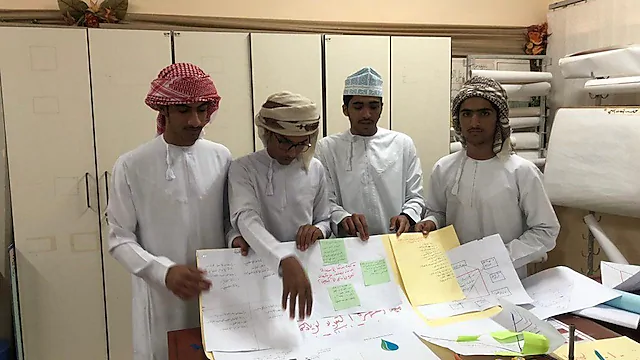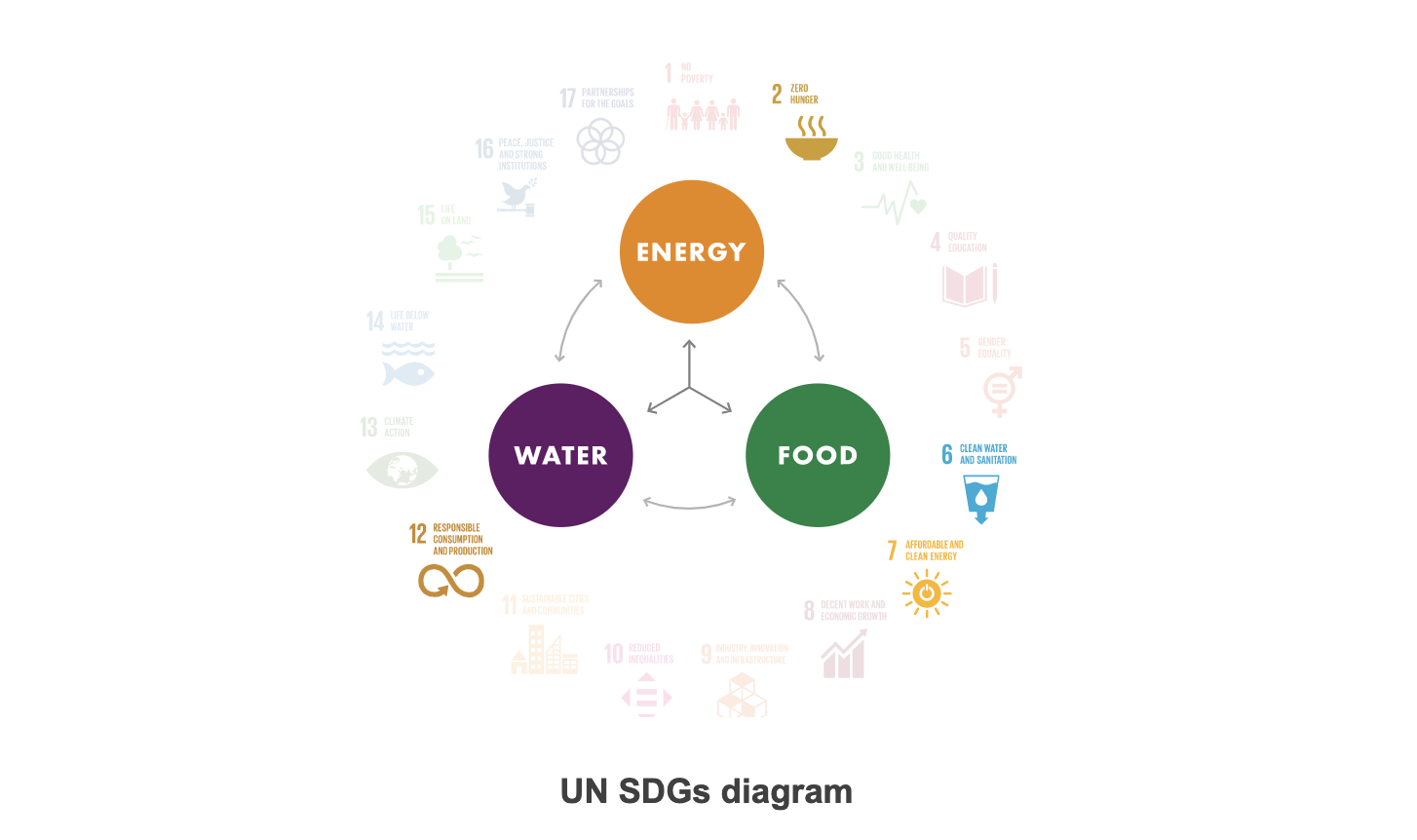NXplorers students in Al Alaa Bin Al Hadrami School in Oman, reimagined the use of condensed water collected from air conditioning units, to create a new source of clean water that could water crops inside and outside their school.
Oman is one of the most water-stressed countries in the world* and faces a high-risk of water shortages. Different water sources need to be considered as natural water sources are becoming unstable. Using the NXplorers toolkit, the students saw how a drop of water could build their future. They saw an opportunity to use the condensed water collected in AC units, that would otherwise go to waste, as a sustainable water source that could help support local agriculture and help crops thrive overall. These are the steps they followed…
In Al Alaa Bin Al Hadrami School there are around 40 air conditioning units. On a typical day, each unit produces around four litres of water an hour, and even more on very hot days in the summer. The NXplorers students discovered that this water can condense and be collected in dedicated tanks to be reused later.
The students found that the process of condensation of water vapour results in clean and pure water. However, due to condensation occurring on the tubes from which Freon gas (a cooling agent used in AC units) is emitted, the condensed water would potentially come into contact with dust, smoke, bacteria or fungi on the tubes. After testing, the students decided the water wouldn’t be 100% safe for drinking, but could be used in alternative ways.

With more than 40 air conditioning units producing 160 litres of water an hour, the NXplorers students decided the best way to make use of such a sizable volume would be to help water the plants both inside and outside the school.
As the condensed water from the AC units doesn’t contain any salt, it can help reduce soil salt concentrations. At high levels, these can be toxic to certain plants and crops and reduce the amount of nutrients available overall. Use of pure, condensed water can create flourishing plants and crops in the long-term, for both the school and the local community.
*Source: World Resources Institute, August 2019

Central box: How can we benefit from the water gathered from the air conditioning units
From the top, clockwise
Box 1: Lack of water
Box 2: The quality of farmers' education
Box 3: Lack of agricultural production
Box 4: Providing experiences
Box 5: Animal trade (with shortage in water resources, they are not able to have a good animal trade)
Box 6: Trading
Box 7: Financial support (investors)
Box 8: Availability of tools and devices (air conditioning units)
Use of pure, condensed water can create flourishing plants and crops in the long term, for both the school and the local community
The project started with a problem inside the classroom, but expanded to help solve problems of water scarcity and a lack of sustainable agriculture. This project contributes to the UN SDGs 2, 6, 7 and 12.
2. Zero Hunger
End hunger, achieve food security and improved nutrition and promote sustainable agriculture
6. Clean water and sanitation
Ensuring access to water and sanitation for all
7. Affordable and clean energy
Ensuring access to affordable, reliable, sustainable and modern energy
12. Responsible consumption and production
Ensuring sustainable consumption and production patterns.

Diagram of the United Nations’ Sustainable Development Goals numbered in a large circle, each with a smaller diagram below to represent the specific Development Goal. All of the Development Goals are faded, apart from four of them:
2. Zero hunger
6. Clean water and sanitation
7. Affordable and clean energy
12. Responsible construction and production
Within the circle there are three circles in a triangle formation reading ‘Energy’, ‘Water’ and ‘Food’, with arrows to show how they are all interconnected.